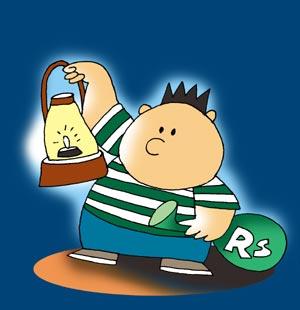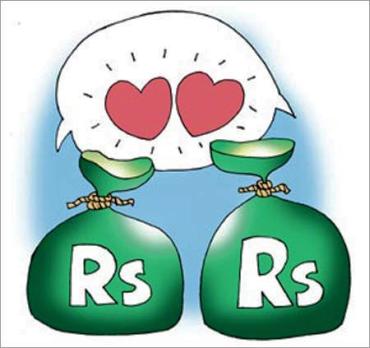 | « Back to article | Print this article |
How to make bank fixed deposits work for you
It's that time of the year when most of us would be receiving salary hikes and bonuses. While few of us would have already planned for things to buy or invest into, a majority would still be unclear about what to do with their money. For the latter, the money would lay idle in their banks' savings account by default.
Though it will earn an interest of 3.5 per cent per annum, we think you deserve to earn more. Don't you?
So instead of keeping it in the savings account, there are many schemes / facilities offered by banks that can come handy during these times. For example normal bank fixed deposits schemes, flexible rate deposit schemes, and sweep-in / sweep-out facility.
Each of these options provide for higher interest rates compared to bank savings account and with the same degree of safety. Let's look at these options and choose the right mix so that your money starts earning more money for you.
Click NEXT to read more
The author is co-founder and director of Bangalore-based Perfios Software Solutions Private Limited. www.perfios.com is a personal finance software solution that provides a 360-degree view of your personal finance, with very little manual intervention.
Investing on bank fixed deposit schemes
Everyone knows about bank fixed deposit (FD) schemes. The tenure of deposit ranges from 7 days to 10 years. However, the suggestion here is not to go for FD of less than 3 months. This is because the rate of interest on such deposits is less than what is offered by savings account (3.5 per cent).
Please note that as per the Reserve Bank of India's, RBIs, new guideline, the rate of interest on savings account will be calculated on a daily basis (Read: Why your savings account will earn more interest now) effective April 1, 2010.
So, if you want high liquidity for 3 to 4 months, then do not use the FD route. Your savings account will fetch you 3.5 per cent interest anyways.
The best way to invest in a FD is to book multiple FDs with varying maturities. If you need certain amount of money after 1 year, go for 1 year FD for that much amount. Depending on the future money requirements, other FDs with higher maturity of say 3 years, 5 years or 7 years can been booked accordingly.
By applying this simple strategy, you are meeting your liquidity requirements as well as earning higher return on a cumulative basis. And not to forget, you are not breaking any FDs to meet your requirements.
Words of caution: At the time of booking any FD, make sure you are selecting the correct interest payout option. If you want regular returns, go for quarterly or half-yearly payout options. Else, choose interest re-investment option (your interest payout will be re-invested to earn more money for you).
Another advantage of investing in fixed deposits with tenure of 5 years or more is that you can avail tax rebate on your annual salary for the current financial year. As per Section 80C of the Income Tax Act, you are eligible to get tax rebate on an investment of up to Rs 1 lakh in bank FDs of 5 year or more.
Click NEXT to read more
Flexible rate deposit schemes
The Flexible Rate Deposit Scheme collects money from investors and invests in government bonds of various maturities. Since government bonds are traded in the market, the rate of interest is determined by the economies of demand and supply.
Here too, you can select various products with different maturities and earn variable rates of interest. This way you can build a portfolio of flexible FDs that will match your returns with what is prevailing in the market.
The objective of the scheme is to provide protection against interest rate volatility by offering deposits at flexible interest rates. Flexible rate schemes are a win-win product for both the depositor and the bank since the rates are directly linked to the market.
Another advantage of this scheme is that it acts as a hedge against inflation. Ideally, if inflation rises, your real return (actual return minus inflation) from normal FD declines. However, in case of flexible rate deposit scheme, the real return would remain unchanged. This is because RBI will raise interest rate to tackle inflation, which in turn will raise market interest rate, and hence your return from flexible FD will increase proportionate to inflation.
Click NEXT to read more
Sweep-in / sweep-out facility
Many banks are nowadays offering such facilities. The Sweep-in / Sweep-out facility provides the benefits of both worlds -- the liquidity of savings account and the higher returns of FD.
This is how it works: Whenever your savings account balance crosses the average quarterly balance requirement, the excess amount gets automatically swept into a flexible fixed deposit. Thus earning you a higher return vis-a-vis bank savings account.
The best part is that your FD is not fixed. In case you want to withdraw more than the available average balance, the fixed deposit will be broken to the extent of the amount you require to meet your needs. Thus giving you the liquidity of a savings account.
This is basically good for those who are not sure about their liquidity needs in the short-medium term.
Summary
By choosing a judicious mix of bank products discussed above, you can make your money work for itself. After all you have earned your annual bonus through sheer hard work and pain! But bank FDs are just one of the options for you.
You should look to exploit other options like stocks, mutual funds, real estate, etc. Here we have just provided guidance on how to leverage banks' existing products to generate higher returns vis-a-vis bank savings account. The idea finally is to make you a smart wealth manager of your own money.




